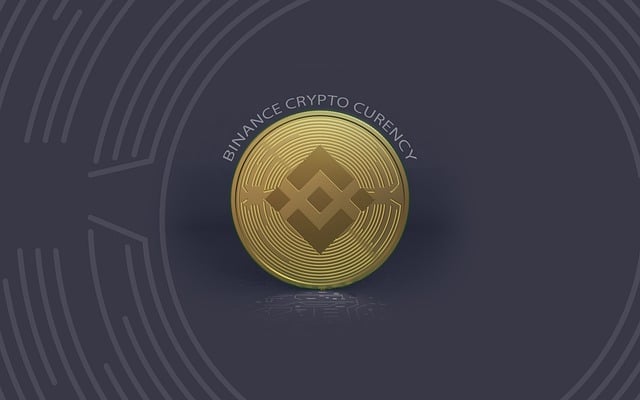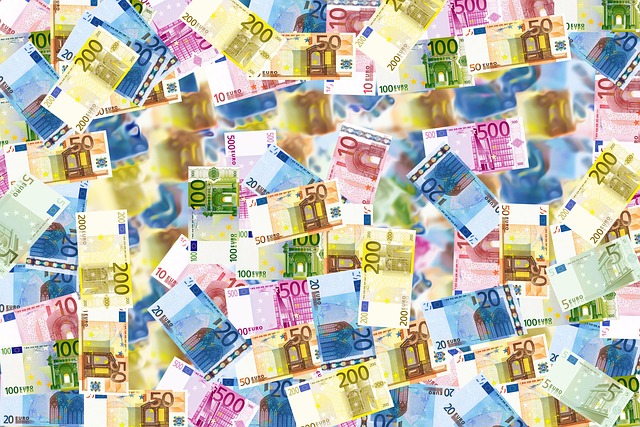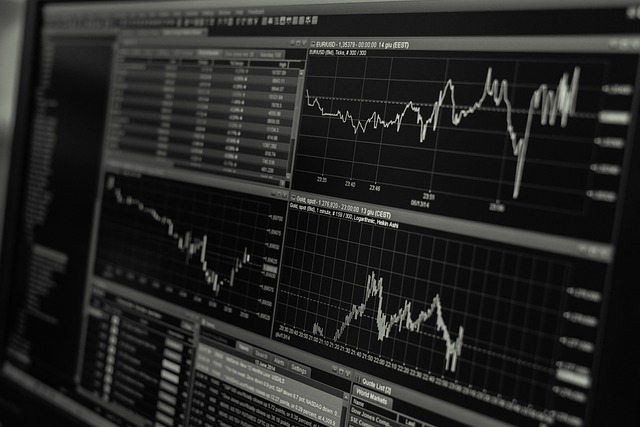Is Binance Free to Trade in 2025? Fees, Tricks, and What You Need to Know
Author: Jameson Richman Expert
Published On: 2025-10-29
Prepared by Jameson Richman and our team of experts with over a decade of experience in cryptocurrency and digital asset analysis. Learn more about us.
Is Binance free to trade? Short answer: not exactly — but many people can trade on Binance at very low cost. This article explains in plain language how Binance’s fee structure works in 2025, when you might pay nothing, typical fee levels across spot, margin and derivatives, hidden costs (slippage, withdrawal fees, funding rates), and practical steps to minimize trading expenses. You’ll also find comparisons with alternatives, tax and regulatory considerations, and links to resources and platform sign-ups.

What is Binance? A quick overview
Binance is one of the world’s largest cryptocurrency exchanges by trading volume, offering spot markets, derivatives (futures and options), margin trading, staking, savings products, and a P2P fiat marketplace. For background information, see the Binance entry on Wikipedia and the official Binance fee information on their site (Binance Fees).
Direct answer: Is Binance free to trade?
Strictly speaking, Binance is not entirely free to trade. Most markets have explicit trading fees (maker/taker fees), and there are often network fees for withdrawals and occasional fees for certain services (fiat on/off ramps, credit card purchases). However, because of fee discounts, promotional zero-fee campaigns, rebates, and efficient order placement (maker vs taker), many users can achieve effectively very low or near-zero trading costs — particularly for high-volume traders and users who use BNB to pay fees.
Key fee components to understand
- Spot trading fees: Maker/taker charges per trade pair.
- Derivative fees: Perpetual and futures contracts have maker/taker fees and funding rates.
- Deposit & withdrawal: Crypto deposits are usually free; withdrawals have blockchain network fees. Fiat deposits/withdrawals can incur bank or provider fees.
- Conversion & instant buy: Higher spreads or fixed fees for convenience services like instant buy or convert tools.
- Other costs: Slippage, spread, margin interest, and regulatory charges (where applicable).
Spot trading fees: how they work
Spot trades are typically charged as a percentage of trade value. Binance historically uses a maker-taker model (maker = limit order adding liquidity, taker = market order removing liquidity). Typical baseline rates (for reference and illustrative examples) have commonly been around 0.1% for taker and 0.1% for maker at the base VIP 0 tier, before discounts and rebates. But these numbers can change and differ by region or product — always confirm on the official fee page.
Example: how fees impact a trade
If you buy $10,000 of BTC at a 0.10% taker fee, that trade costs $10 in fees. If you instead place a maker limit order at 0.05% (after discounts), you pay $5. Over many trades, using maker orders and discounts compounds into substantial savings.

Fee discounts and ways to reduce costs on Binance
Binance provides several mechanisms to lower fees:
- BNB fee discount: Holding and using Binance Coin (BNB) to pay fees usually grants a discount. The exact discount rate has changed over time, so check your account’s fee page. You can register on Binance here: Binance registration.
- VIP tiers: Binance uses a tiered fee model — higher 30-day trading volume and BNB balance raise your VIP level, lowering maker/taker percentages.
- Referral codes and promotions: Referral links and temporary promotions sometimes reduce trading fees or offer rebates.
- Maker vs taker: Use limit (maker) orders when liquidity allows to pay lower maker fees.
Derivatives and margin: different fee dynamics
Trading perpetual futures and other derivative products uses a distinct fee model (often slightly lower maker fees and comparable taker fees) plus a funding rate that is paid or received periodically to keep contract prices aligned with spot. Margin trades may also incur interest on borrowed funds.
Things to watch for with derivatives
- Funding rates: Ongoing cost or income. Even “zero-fee” per-trade promotions don’t remove funding charges.
- Liquidation fees: Extra costs if positions are liquidated.
- Leverage risk: Higher trading fees on leveraged positions might be combined with interest.
Deposit and withdrawal fees
Deposits in crypto are typically free on major exchanges like Binance, but withdrawals require blockchain network fees (miners/validators). These are not charged by Binance as a profit center but passed through as required transaction fees. Fiat deposits/withdrawals may involve payment processors, banks, or local partners with their own costs.
Example: Sending ETH from Binance will cost the current Ethereum network gas; Binance will display the fee before confirming the withdrawal.

Hidden costs: slippage, spreads and opportunity costs
Even if an exchange advertises “zero trading fees” for certain products or pairs, hidden costs can appear as:
- Slippage: Market orders during low liquidity or high volatility can execute at worse prices.
- Spread: The difference between bid and ask, especially for low-cap altcoins, can be significant.
- Funding and borrow costs: For derivatives and margin respectively.
- Price impact: Large orders can move the market against you.
Regional differences and regulatory impact
Whether Binance is “free” or even available varies by jurisdiction. Binance has different entities (e.g., Binance Global, Binance.US) with distinct product sets and fee structures. Some features (derivatives) are restricted in certain countries due to regulatory compliance. For a guide on where exchanges like Bybit are restricted, see this in-depth coverage: Where is Bybit not restricted?
Comparing Binance fees to other exchanges
Binance is competitive but not the only low-fee option. Here are a few alternatives and how they compare:
- MEXC: Competitive fees and low maker/taker rates for many pairs. You can evaluate by signing up here: MEXC registration.
- Bitget: Focuses on derivatives with promos and low fees; register here: Bitget registration.
- Bybit: Known for derivatives and aggressive fee promotions — sign-up link: Bybit registration. For jurisdictional restrictions see the Bybit guide linked above.
Choosing an exchange should consider liquidity, fees, regulatory protection, and product availability — not just headline fee numbers.

When can you trade for free (or nearly free) on Binance?
There are a few scenarios where your per-trade cost can be zero or negligible:
- Promotional campaigns: Binance sometimes runs temporary zero-fee markets or trading competitions with fee rebates.
- Rebates and maker fee credits: If you earn maker rebates (e.g., via liquidity programs or specific pairs), they can offset fees.
- Using BNB and discounts: If your net fee after BNB discount and rebates reaches zero (rare and temporary), you might pay nothing.
- Peer-to-peer (P2P): Buying/selling crypto via P2P can sometimes avoid exchange trading fees, though you’ll still face payment processor charges or spread.
How to minimize what you pay: practical checklist
- Enable BNB fee payment if you hold BNB.
- Use limit orders where possible to capture maker fees instead of taker fees.
- Verify your VIP tier and calculate if increasing 30-day volume or BNB holdings reduces fees enough to justify changes.
- Avoid instant buy/credit card purchases when low-fee bank transfers or P2P options are available.
- Plan trades to reduce on-chain withdrawals — combine withdrawals or use layer-2 solutions to save network fees.
- Use high-liquidity pairs to reduce slippage and spread costs.
Examples: Real-world scenarios
Example 1 — Small retail trader: Sarah places a market buy for $200 using a taker order at 0.1% and pays $0.20. She enables BNB discount (say 25% for this example), reducing that to $0.15. If she instead used a limit order that executed as maker, she might save another 0.02%–0.05%.
Example 2 — Active trader with VIP status: John trades $10M monthly and holds BNB, reaching a VIP level that lowers maker fees to 0.02% and taker to 0.04% — this reduces costs dramatically.

Tax and legal implications
Lower trading fees do not change tax responsibilities. Trades may trigger taxable events depending on your jurisdiction (capital gains, income, etc.). In the United States, the IRS provides detailed guidance on virtual currencies; see the IRS FAQs on virtual currencies: IRS Virtual Currency FAQs. Always consult a tax professional for your circumstances.
Security and compliance considerations
Choosing a low-fee exchange should not sacrifice security and compliance. Check for:
- Regulatory entity and licensing for your region
- Insurance funds or SAFU-type protections
- Two-factor authentication and withdrawal whitelists
- Transparent proof-of-reserves or audit reports where available
When Binance might not be the best choice
Binance might not be optimal if:
- Your jurisdiction restricts Binance services (e.g., derivatives restricted in some countries).
- You need stronger local fiat rails or banking relationships (local exchanges may offer better fiat on/off).
- Regulatory clarity and local protection are your priority — local regulated exchanges might be preferred despite slightly higher fees.
For a deeper look at market cycles and strategy considerations that impact trading timing (which affects slippage and cost), see this analysis on altcoin market seasonality and trading strategy examples: What is Altcoin Season in Crypto and Simple Crypto Trading Strategy — practical blueprint.

Is Binance free to trade for large-volume traders?
Large-volume traders can reach VIP tiers that substantially cut fees; some institutional programs include negotiated rates or rebates. While trades are not literally free, high-volume discounts and maker rebates can make trading costs negligible as a percentage of turnover. If you are an institutional trader, contact Binance institutional sales or use APIs and OTC desks to reduce friction and costs.
Frequently asked questions (FAQ)
Q: Is Binance free to trade for beginners?
A: Beginners will usually pay small trading fees (e.g., ~0.1% range as a baseline). Using limit orders, enabling BNB fee discounts, and selecting low-spread pairs will minimize costs. P2P markets and bank transfers often provide cheaper fiat on/off than instant buys.
Q: Does Binance charge to deposit crypto?
A: Crypto deposits to Binance are typically free; withdrawals incur blockchain/network fees that Binance will show before you confirm the transfer.
Q: Can I trade with zero fees on Binance?
A: You may experience zero-fee scenarios during promotions, or when rebates/discounts offset fees, but these are situational and temporary. Ongoing costs like funding rates and withdrawal network fees still apply.
Q: What’s the difference between maker and taker fees?
A: Maker orders add liquidity (limit orders resting on the order book) and often have lower fees. Taker orders remove liquidity (market orders) and typically have slightly higher fees. Using maker orders where possible reduces costs.
Q: Are there any hidden fees?
A: Hidden costs can include slippage, spread, funding rates for derivatives, margin interest, and withdrawal network fees. Always check the order preview and the fee schedule.
Further reading and resources
- Binance official fees: Binance Fee Page
- Bybit restrictions and regional access: Where is Bybit Not Restricted?
- Bitcoin price outlook and long-term trading context: Bitcoin Price Prediction 2030 (INR)
- Altcoin season timing and strategy: What is Altcoin Season
- Practical beginner trading blueprint: Simple Crypto Trading Strategy — Reddit Blueprint

Conclusion: Practical verdict
Is Binance free to trade? No — but it is one of the most cost-efficient exchanges for many users. Trading is rarely literally free once you account for spreads, funding, and withdrawal costs. That said, Binance’s discounts (BNB payments, VIP tiers), competitive maker/taker rates, and periodic promotions make it possible to trade at very low effective costs if you plan trades carefully. Always confirm fees on the official fee page and factor in regional regulatory constraints and tax obligations before you trade.
If you want to try Binance or compare it with other platforms, here are direct sign-up links to get started:
- Binance: Register on Binance
- MEXC: Register on MEXC
- Bitget: Register on Bitget
- Bybit: Register on Bybit
Use the fee page on your exchange, plan your orders (use limit/maker orders where possible), and keep a close eye on funding rates and withdrawal costs — that combination will keep your trading expenses minimal in 2025 and beyond.